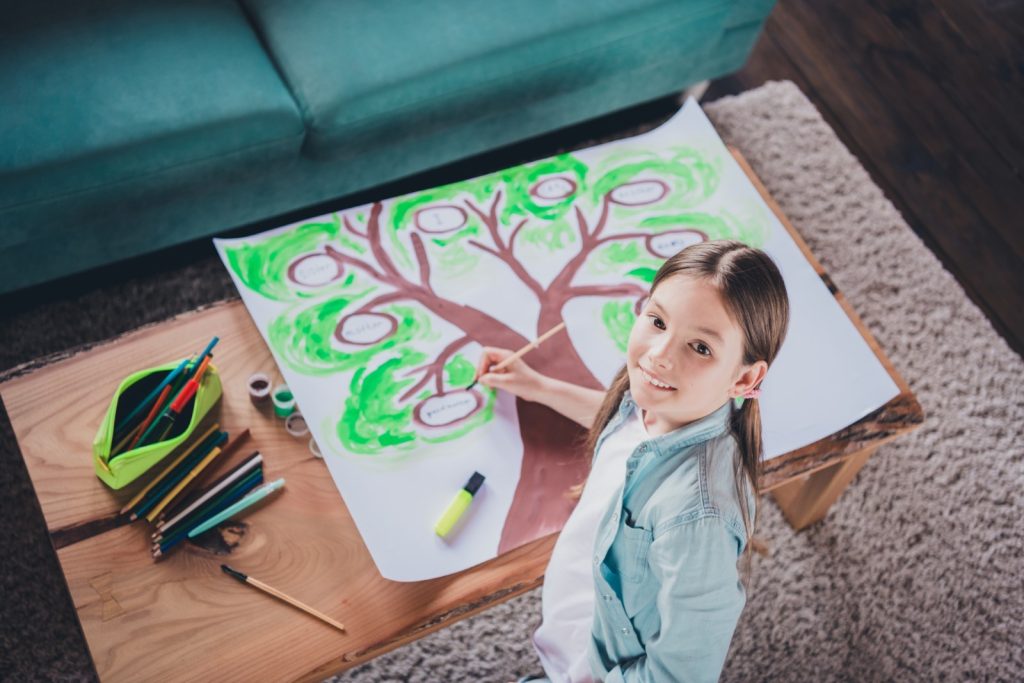By: Maddie Gustafson
Introduction
Ages six to ten are a critical period in an adoptee’s life, as they begin to develop a deeper understanding of their identity. For transracial adoptees, starting school introduces unique challenges, particularly as they navigate predominantly White peer groups. At this stage, the child’s world expands beyond the household, and their parents are no longer the sole influence on their sense of self. They are now shaped by a combination of parental guidance, peer interactions at school, and their own growing experiences.
While some awareness of adoption may have been present earlier, it is during this stage that children begin to notice differences more clearly, both in terms of race and adoption status. They may recognize that they don’t look like their parents or classmates, and questions about their background or origins may begin to surface. This is when they start to understand that their family structure and cultural heritage are distinct from those of their peers.
For many adoptees, this newfound awareness can evoke curiosity and pride, but it can also bring confusion, especially if their peers lack understanding of adoption or are unfamiliar with racial differences. As they interact with others, adoptees face the dual challenge of forming their identity while navigating how they are perceived by their peers, making this a complex and pivotal time for self-discovery and a sense of belonging.

Questions Adoptees May Have
As adoptees grow older and begin to develop a deeper sense of self, they often start asking fundamental questions about their identity and origins. Questions like “Do I have a mom in my birth country?” and “How did I get here?” reflects a natural curiosity about their birth family and whether they have biological ties to the place they were born. Being at school and receiving comments and questions regarding their differences can trigger many questions related to belonging and identity. “Why do I look different than my adoptive parents?” is a question that can arise as the adoptee starts to notice physical differences between themselves and their adoptive family members. These observations frequently lead to deeper reflections on their adoption, triggering questions such as “Why was I adopted?” or “What does adoption mean?” Here, the adoptee is beginning to grasp their personal story. These types of questions can be a way of seeking to understand how they came to be a part of their adoptive family and what it means in relation to their birth family. These questions often emerge as part of a developmental process in which adoptees try to integrate their adoption story with their sense of self.
Events
Awareness of Differences
As adoptees enter school and begin interacting more with their peers, they often become acutely aware of the differences that set them apart. For transracial adoptees, this awareness is especially pronounced as they notice the racial differences between themselves, their classmates, and their adoptive parents. However, all adoptees, regardless of race, will begin to recognize the unique way their family was formed through adoption. Comments from peers, whether through curiosity, questions, or even teasing, can bring these differences to the forefront, making it difficult to ignore. For example, a family tree assignment may cause an adoptee to feel uncomfortable or confused about how to represent their family when it doesn’t fit the traditional model. This awareness can trigger feelings of exclusion, as the adoptee realizes that their family structure doesn’t align with the “norm” and may not meet conventional expectations of what a family should look like. Many adoptees at this stage may also feel a strong desire to fit in by identifying with the majority culture, particularly if they were raised in a predominantly White society. They might feel “White” in their cultural upbringing, yet their physical appearance is different, creating a complex identity where they don’t fully feel one culture, but instead are pulled between two identities. This internal conflict can evoke confusion, frustration, and a desire to belong, highlighting the emotional challenges of growing up as an adoptee in a world that often emphasizes differences over similarities.

Honorary White Status
Transracial adoptees often find themselves identifying with or feeling aligned with White culture due to the predominance of American culture in their daily lives. No matter the depth of their involvement in their birth culture, the sheer exposure to American culture, often through their White parents, can lead them to internalize these values and behaviors. This is further reinforced by how they are treated by others, who may see and treat them as “White” based on their cultural upbringing, even if their physical appearance suggests otherwise. This alignment with White culture can make adoptees feel disconnected from their birth culture. Furthermore, some adoptees may experience White privilege, benefiting from the advantages that come with having White parents. Through this connection with mainstream White culture, adoptees may experience a sense of acceptance and belonging, which can be comforting. However, this alignment can also complicate their racial identity, especially as their authenticity is questioned by others. They may enjoy certain privileges through their White parents that other people of their racial background do not, which can lead to a deeper reflection on their own racial experience and sense of self.
Traveling to Birth Country
Traveling to an adoptee’s birth country offers a unique opportunity to reconnect with their cultural roots and gain a deeper understanding of the place where they were born. While many adoptees choose to visit their birth country at some point in their lives, the timing and decision to do so often depends on the individual, their family, and the country of origin. For younger adoptees, such trips tend to be more about cultural exposure than personal exploration. At this age, they are likely to have limited memories of the experience and may not fully grasp its significance. Since they are still heavily influenced by their adoptive parents, the decision to travel is often more in the hands of the parents than the adoptee themselves. As adoptees grow older, however, they may feel a stronger desire to visit their birth country on their own terms, seeking a more personal exploration of their origins.
No matter the age of the adoptee, this journey can deepen their connection to their birth country, fostering pride in their heritage. However, it can also bring feelings of loss as they reflect on what they missed by not growing up there. Although they may share physical traits with the people, culturally they are shaped by White/American norms, creating a sense of being caught between two worlds. Language barriers, unfamiliar customs, and different worldviews can lead to feelings of disconnection. Ultimately, the experience is both affirming and bittersweet, as adoptees navigate the complexities of their identity and sense of belonging.
Parent Resouces
Although parents are no longer the sole influence on their child’s identity development as they grow older, they remain a crucial part of fostering continued cultural involvement. Exposure to the adoptee’s birth culture fosters pride in their heritage and provides a deeper understanding of their unique background. Along with cultural engagement, it is also important to make connections with other adoptive families at this age. These connections can provide a safe space to share thoughts, feelings, and experiences while fostering invaluable support and understanding, for both adoptees and adoptive parents. These relationships can help strengthen an adoptee’s sense of self as they navigate school. For adoptive parents, connecting with others who have also adopted provides a support system for questions and feelings that may come up post adoption. Staying in touch with families from your adoption group is a great first step.

Additionally, education on the adoptive parent’s part is vital in helping your child navigate the world as an adoptee. As adoptees grow older and begin interacting more with peers, it’s important for parents to educate themselves and their child on how to respond to questions related to race and adoption. Many children may face questions at school or in social settings about their background, and it’s essential for parents to help their child feel prepared to address these inquiries in a way that aligns with their comfort level. Parents should have open, age-appropriate conversations with their child about adoption, helping them understand how to respond to questions from classmates, teachers, or even strangers, while also respecting the child’s boundaries.
Furthermore, school assignments, such as creating a family tree or discussing their birth story, can bring adoption to the forefront. Parents should take time to prepare their child for these types of assignments, discussing how they might feel and offering guidance on how much information they feel comfortable sharing. It’s important for parents to also consider how much of the child’s adoption story they want to share with the school. This decision should be made with the child’s input, ensuring that they feel safe and empowered in how their personal narrative is represented. By proactively addressing these situations and preparing their child, parents can help foster a sense of confidence, agency, and pride in their adoption story.



